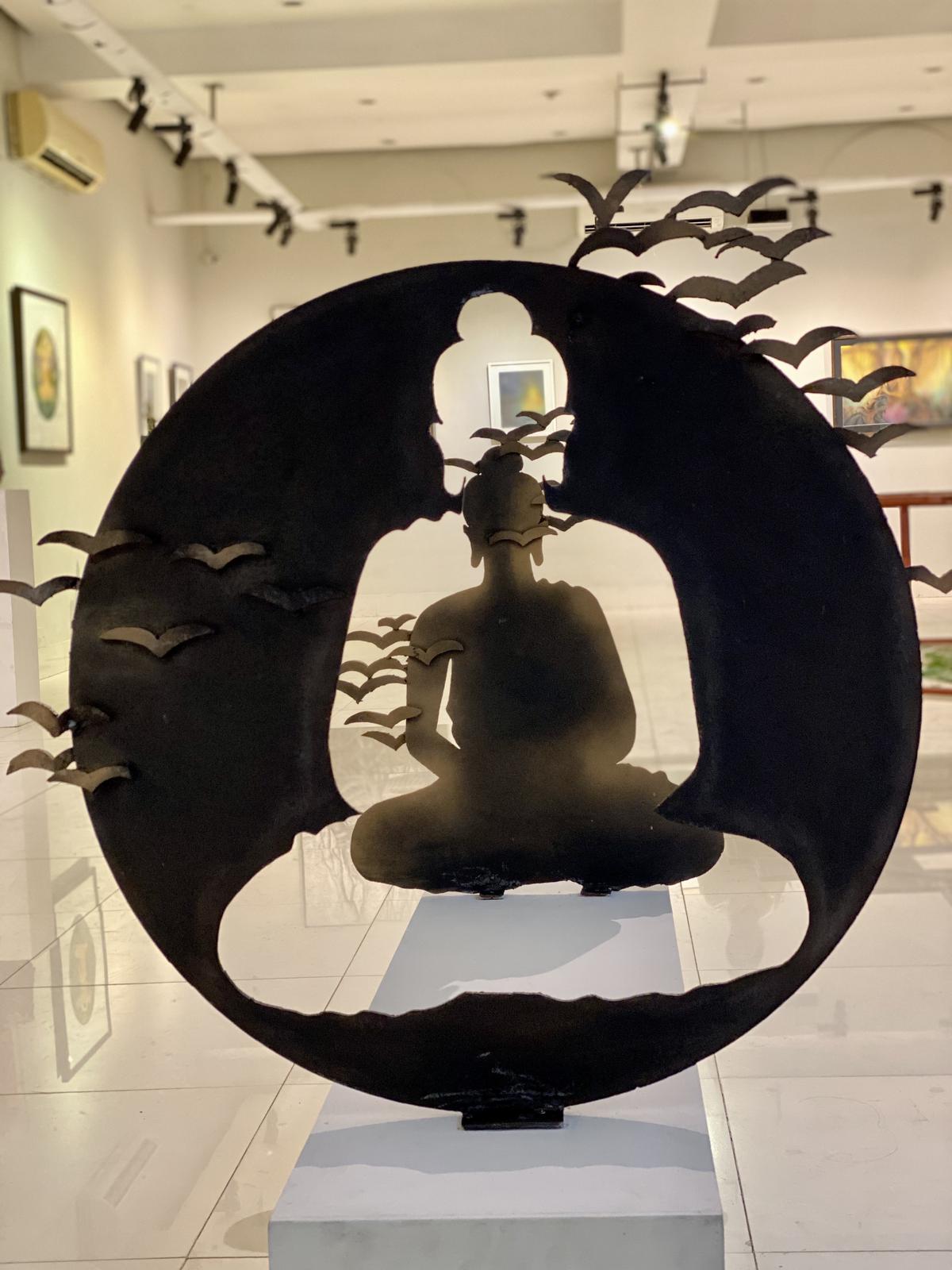It is an exploration of the human experience – how the desire for mortal things turns people into miserable individuals and how humans can free themselves from greed and ultimately attain liberation.
This intrinsically Buddhist theme defines an art exhibition at the Alliance Française de Dhaka. It is an attempt to refute the modern notion that art and religion are two separate entities. But according to the organizers, the oriental art that forms the basis of the show is essentially sacred art. It all revolves around a sacred center, a sacred origin and a sacred source.
Bringing together around 50 artists from Bangladesh and West Bengal for the first time, the exhibition explores traditional expressions of Buddhist art within the region. It dares to suggest that humans can find common ground in the heart of an angry, confused and divided world.
Dr. Malay Bala, curator of the Dhaka-based Oriental Painting Study Group, said, “It is a celebration of truth, beauty and joy, far from the worldly desires that drive the event.”
art and buddhism
“This art is very much a part of Buddhism and you can’t separate the two. If you go to Japan, and you go to one of the ancient temples in Osaka, there’s this huge golden Buddha statue,” Mikhail I. . Islam, curator of the exhibition said in an interview. “You cannot live without feeling the compassion or the blessings or the holy presence of the peace of the Buddha.”
‘Bowl Buddha’ by Amit Nandy | photo credit: special arrangement
Buddhist art is part of Bengali identity in a region that combines all sacred traditions – Hinduism, Islam and Buddhism, and to a lesser extent Christianity. “These are the traditions that form the basis of our culture,” said Mr. Islam.
The exhibition takes a fresh look at the story of the Buddha and his life, depicting the totality of the human condition. This means that a closer look at any Buddhist narrative and illustrations from his life reveals something that every human being will be able to relate to in some way. This is the message the Buddha and the exhibition leave for the visitors.
Nothing can save man from disease, old age and death; And no doctor is immortal or infallible. All they can do is take a wry look at the human condition, to see how they can alleviate some of the suffering. The title of the exhibition seems to inspire – From Suffering to Liberation: The Buddhas of Bengal,

A display of Buddhist art at the Alliance Française de Dhaka | Photo credit: Arun Devnath
The exhibition was inaugurated on 3 May by the high priest of Sylhet Buddhist Bihar, Buddhist Vante Sanghanand Mohthero. This will continue till May 15.
The centerpiece of the exhibition is a project based on the life cycle of the Buddha divided into four stages: birth, renunciation, Buddhahood and mahaparinirvana (the ultimate transcendental state). The project, led by Amit Nandi, a teacher of oriental art at the University of Dhaka, has been presented with 16 paintings with a Buddha statue in the middle. The experience of being in the presence of an image of the Buddha can be a calming reminder of the human capacity for compassion—a central pillar of Buddhist belief.
Mr. Bala noted that some Buddha paintings were rendered in semi-transparent, discolored layers of color, accomplished through an oriental visual art technique known as “wash drawing”. The technique mystifies the Buddha images, sanctifies the background and transports the viewer back to the long-lost blissful days.
“The fundamental difference between Western and Oriental art forms, simply put, is that we see, absorb and internalize before we draw and Western artists see and draw,” said Mr. Bala. he said.
paradox of sacred art
The artworks – all untitled and without artists’ names – aim to connect human experiences with the life of the Buddha, being both one-of-a-kind and unique.
“You and I may be looking at a painting of the Buddha, the same picture, but our whole life experience will be completely relevant to what matters to us. We will be looking at the Buddha when he is on the chariot and a Looking at the sick man. And each of us has experienced illness in our family, but your experience of your grandmother, and her illness versus my younger cousin’s is going to be completely different,” Mr Islam said. Said.
Yet, both can identify with that human condition. In this way, there is a paradox of sacred art: it has something that is absolute in some way and something that is relative.
Mr. Islam opposes the concept of art curation, describing it as a modern Western concept whose worldview is radically different from the Bengali tradition. “I think it was more about helping artists see how they see Buddha, how they experience it and what resonates in their lives,” he said.
“Whether we like it or not, Bengal is a religious community, a multi-religious community in the truest sense of the word. Our religious worldviews were so wide and universal. In terms of Buddhism, Hinduism and Islam, if you look at pre- Going back to colonial times, you had Islamic philosophers sitting down with Hindu philosophers discussing what the Vedas were saying. And Muslim scholars, comparing it to the Quran, trying to understand what these two What God is communicating through the holy scriptures,” Mr Islam said.
This level of spiritual exchange between the two religions is unheard of in many parts of the world, but the legacy of cooperation has inspired people in Bengal for centuries. And the main takeaway from the Buddhist art exhibition is the value of self-annihilation and liberation from primary emotions and ego.